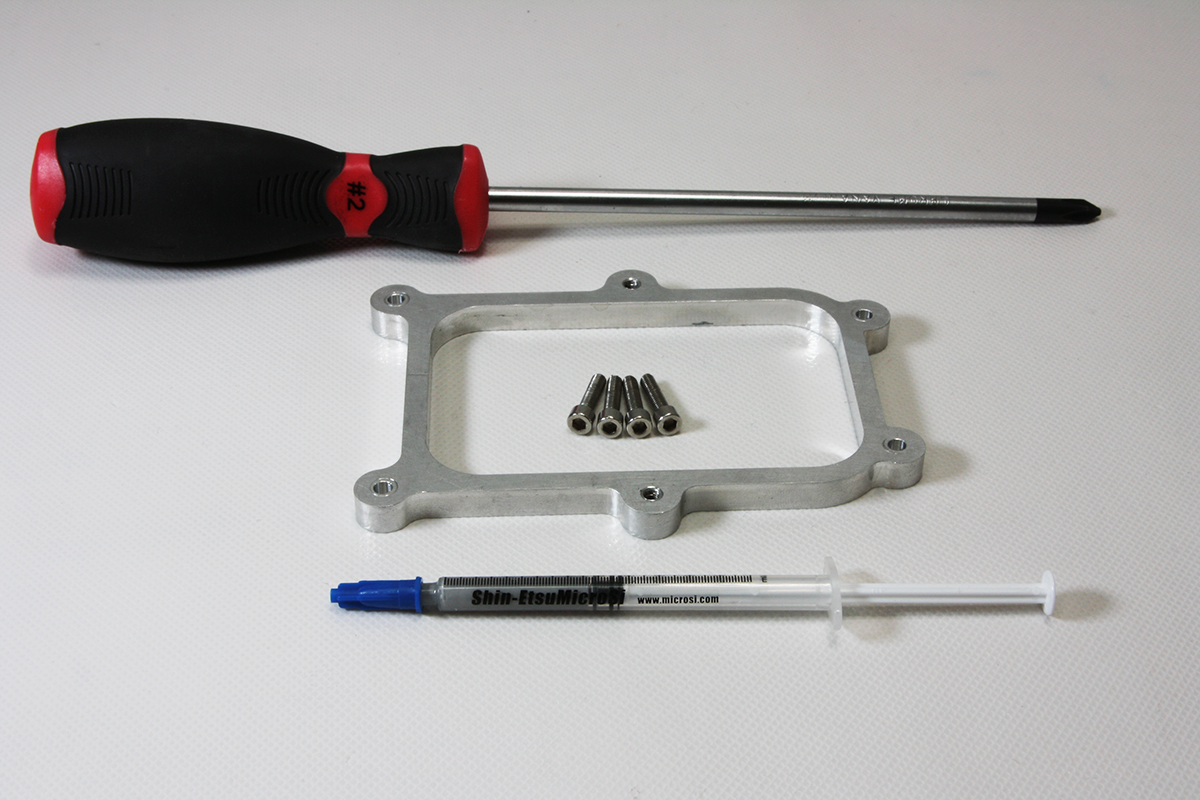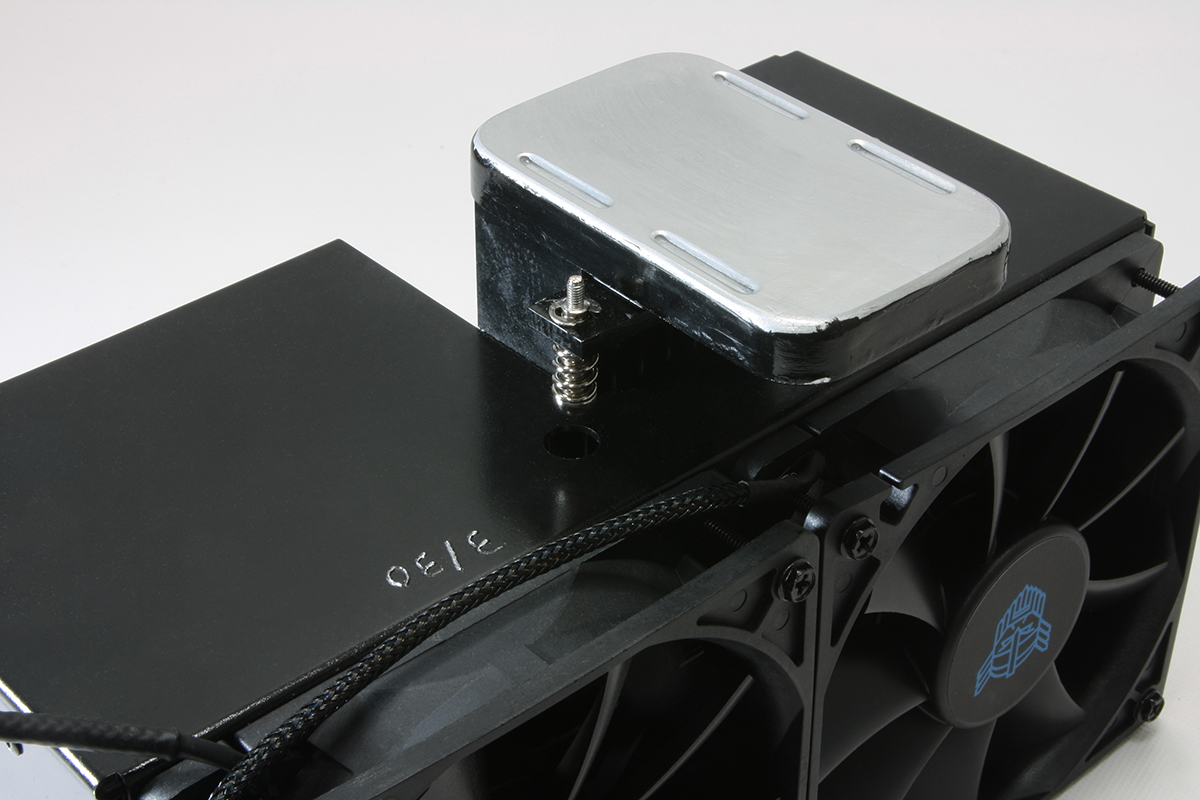Early Verdict
The IceGiant ProSiphon offers a sneak peek of future performance CPU-cooling tech that easily bests some of our favorite Threadripper thermal solutions. The prototype we tested is massive and noisy, though that should improve with final versions.
Pros
- +
Excellent thermal performance
- +
Retail version intends to improve design and performance over prototype
Cons
- -
Prototype is very large and heavy
- -
Fan noise at full RPM (fan choice may differ in retail version)
- -
Prototype and retail version may be too large for compact builds
Why you can trust Tom's Hardware
Rarely these days is there major innovation or changes in the world of PC cooling. So when we see new thermal technology coming to market and happen to be one of only a few in the world to get the opportunity to share our early experiences, things become very interesting very quickly. The IceGiant represents that rare kind of innovation, and makes its way to us as a new thermosiphon cooling solution designed by a team of engineers with a background in industrial and enterprise thermal solutions.
As its name implies, the IceGiant ProSiphon is, at least at this point in the prototype process, an absolutely massive thermal solution that's specifically designed for performance CPU cooling. As we will see, it also provides excellent cooling performance when compared against some of the best Threadripper heatpipe coolers we have tested.
There should be some real excitement building as we await the IceGiant ProSiphon’s final form -- though it's not entirely clear what form that will take yet.

While the IceGiant ProSiphon Elite is currently available for pre-sale on the IceGiant website, the unit we got our hands on is a working prototype that the company says will see some substantial improvements by the time the units arrive in retail packaging.
The IceGiant ProSiphon Elite prototype model we received is so large, it nearly dwarfs the rest of our AMD Threadripper hardware, while the memory DIMMs are nearly obscured beneath the cooling tech. For perspective, the image above isn't the cooler towering atop a compact motherboard. The cooler here sitting atop our 32-core 2990WX and E-ATX Gigabyte X399 Aorus XTreme motherboard. So it dominates even the largest motherboards you can buy. Obviously at this point, Installing the IceGiant will severely limit your chassis choices.
Not only is the IceGiant voluminous, it also weighs in at a hefty 4.85lbs (2.2kg), making it one of the largest overall cooling tower solutions we’ve ever seen. Some of these overbearing stats could improve when the finalized retail version arrives, but it's clear that whatever form it takes, this cooler is going to earn its giant epithet.
If you’re like us, you’re curious as to how a thermosiphon cooler operates while still being functionally different than the heatpipe coolers of which we’re familiar.
Heatpipe coolers rely on the boiling and evaporation of a liquid (typically distilled water) within each individual heatpipe, which travels up the hollow center of the pipe, begins cooling and then fully condenses further up the cooling tower, while dissipating thermal energy in the process. Once that liquid has fully converted back to liquid form, a sintered wicking material along the heatpipe walls then draws the liquid back down to the base to begin the process once again.
Get Tom's Hardware's best news and in-depth reviews, straight to your inbox.
A thermosiphon works on similar principles, as it also requires the boiling, evaporation and condensation of a liquid - in this case, a dielectric fluid. A thermosiphon instead makes use of natural convection of warmer and cooler states of coolant to effectively ‘pump’ the energy-rich evaporated vapor through the cooler. Using large, flat condenser cores, the IceGiant ProSiphon Elite utilizes greater surface area to effectively transfer thermal energy out of the fluid vapor, into the cooling fins and away from the cooler.
Specifications
| Height | 6.50" / 165mm |
| Width | 9.88" / 250.9mm |
| Depth | 4.25" / 107.9mm (5.25" / 133.4mm w/ fans) |
| Base Height | 1.63" / 41.4mm |
| Assy. Offset | 1.75" / 44.5mm (forward) |
| Cooling Fans | (2) 120 x 25mm |
| Connectors | (2) 4-pin PWM |
| Weight | 77.7 oz / 2203g |
| Intel Sockets | 115x, 2011/2066, 1366 |
| AMD Sockets | TR4, AM4 |
| Warranty | TBA |
| Web Price | $120 |

Our IceGiant prototype was shipped only with the bare essentials: a magnetic Phillips screwdriver, a TR4 mounting plate/collar machined from a single block of aluminum, and machine screws for the mounting plate.
If your system is based around another socket, note that the website says the final product will support AM4, 115x, 2011/2066, 1366, as well as TR4 (and presumably TRX40).
A syringe of Shin-Etsu thermal compound was also included, although retail versions will reportedly ship with Thermal Grizzly thermal paste instead. For our testing to make sure we weren't giving the IceGiant any unfair advantage, we used our standard Arctic MX-4 thermal compound as we do for all cooler evaluations.

The mounting collar aligns with the standard Threadripper machine threads and gets secured with the four hex-head screws. This collar serves dual purposes as both a raised mounting bracket and as a "well" for the base of the cooler to rest within to maintain lateral stability once the IceGiant is seated onto the CPU. When your cooling tower weighs nearly 5 pounds, lateral stability is an important consideration.

The contact pad of the IceGiant’s base is large enough to cover the entire face of AMD’s massive Threadripper CPUs. The mounting arm and tension screws are factory assembled to the cooler’s base on our prototype. A set of deep grooves are milled into the trunk of the cooler, behind the mounting hardware, though we’re not certain if this design serves a specific purpose or is simply an aesthetic choice.
Due to the obvious girth of the IceGiant, holes are provided through the top and bottom casing to allow for the slim, magnetic screwdriver to reach the spring tension mounting screws. As tedious as this might appear, the retention collar bracket maintains alignment of the mounting base in correct orientation to allow the tension screws to be easily seated.

The rear of the IceGiant ProSiphon prototype provides some indication as to the fin structure, and shows off the dual condenser cores, each running the entire length and width of the cooler.
The upcoming retail version of the IceGiant ProSiphon Elite will reportedly utilize three condenser cores, while also trimming overall size with a smaller fin stack. We're also told that fin density will be improved on the smaller cooling fin stack of the retail version. Perhaps the best is yet to come.
Full details and specifications of the IceGiant ProSiphon prototype and IceGiant ProSiphon Elite can be found on the IceGiant website.

The IceGiant prototype model came with a pair of 120mm Delta fans. While the rear hub decal was not present to determine exact model and ratings, we measured their max RPM at 2300 while in operation on the cooler during testing.
There is some uncertainty as to which fans will be shipped on the retail versions of the IceGiant, but we’re told they will be chosen and optimized for fan speed, noise level and airflow through the dense cooling tower fins. That sounds like exactly the kinds of things all cooler fans should optimize for.
MORE: Best CPU Cooling
MORE: How To Choose A CPU Cooler
MORE: All Cooling Content

Garrett Carver is a contributor for Tom’s Hardware, primarily covering thermal compound comparisons and CPU cooling reviews; both air and liquid, including multiple variations of each.
-
nofanneeded Motherboard specs should change ... the mounting holes for the CPU cooler should be mounted on the case itself and not o the motherboard . If they do this you can add a huge heatsink eveen upto 2KG without the fear of breaking the motherboard.Reply -
redgarl Replynofanneeded said:Motherboard specs should change ... the mounting holes for the CPU cooler should be mounted on the case itself and not o the motherboard . If they do this you can add a huge heatsink eveen upto 2KG without the fear of breaking the motherboard.
It is impossible since all the case are different and doesn't follow standards. -
nofanneeded Replyredgarl said:It is impossible since all the case are different and doesn't follow standards.
It is possible , the motherboard mounting screws are followed standard already ,and it is just 4 mounting holes more on the case it self where you mount the heat sink screws.
However this will fix the CPU position on the Motherboard it self .. and I think this is not a bad idea at all , they can choose the best CPU position and make it fixed place , just like the slots places for example.. -
USAFRet Reply
And how would one transfer the heat load from the CPU face to the cooler?nofanneeded said:Motherboard specs should change ... the mounting holes for the CPU cooler should be mounted on the case itself and not o the motherboard . If they do this you can add a huge heatsink eveen upto 2KG without the fear of breaking the motherboard.
Long rigid pipes would not work, because no two cases are identical.
Flexible pipes...Hey, we just reinvented the AIO liquid cooler. -
wexir man i'd love to put it on top of my r5-1600 and see how far can it clock hahaReply
i wonder if it would be possible to have extra brackets that lets's say you could screw to the top of the case so it would lower the stress on the motherboard -
BaRoMeTrIc Reply
Do you mean to mount the cooler on the motherboard standoffs? even though the motherboard is already occupying those standoffs, and they are staggered in 3 rows of 3 on an ATX mobo?nofanneeded said:It is possible , the motherboard mounting screws are followed standard already ,and it is just 4 mounting holes more on the case it self where you mount the heat sink screws.
However this will fix the CPU position on the Motherboard it self .. and I think this is not a bad idea at all , they can choose the best CPU position and make it fixed place , just like the slots places for example.. -
rubix_1011 No, it is much more similar to a heatpipe cooler. There is not an internal pump...the fluid inside is distributed by thermal convection, and the fluid is designed to change phases rapidly to allow for heat to be expelled quickly.Reply -
nofanneeded ReplyBaRoMeTrIc said:Do you mean to mount the cooler on the motherboard standoffs? even though the motherboard is already occupying those standoffs, and they are staggered in 3 rows of 3 on an ATX mobo?
There will be extra four standoffs in my Idea for the cooler just below its place.